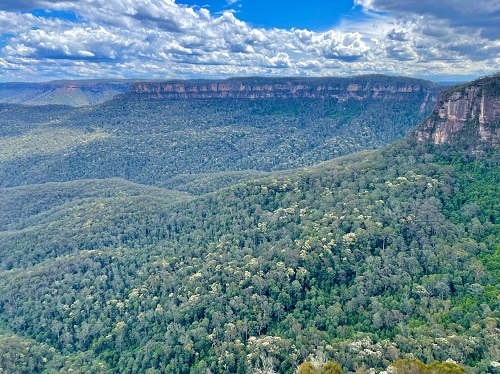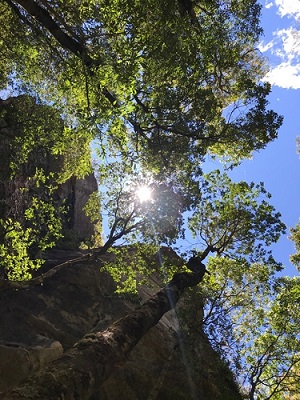Blue Mountains Hub for Ecology & Conservation

The Blue Mountains Hub for Ecology and Conservation will bring together world leading expertise in ecology and conservation science to achieve tangible outcomes for the NSW community and environment. The Greater Blue Mountain Area is a World Heritage listed site of outstanding natural value. Spread across eight adjacent conservation reserves, it constitutes one of the largest and most intact tracts of protected bushland in Australia. Its exceptional biodiversity values are complemented by numerous others, including indigenous and post-European-settlement cultural values, geodiversity, water production, wilderness, recreation and natural beauty. The Blue Mountains are also directly adjacent to one of the largest and most rapidly growing urban areas in Australia and contain an important urban corridor between Sydney and western NSW. It has recently seen the devastating consequences of natural disasters (drought, bushfires, flooding) related to climate change. The Greater Blue Mountains World Heritage Area is therefore unique, but also distinctively vulnerable to a range of pressures from population growth, urban expansion, and climate change.
The central aims of the Blue Mountains Hub for Ecology and Conservation are to:
- Bring together researchers working with representatives from State and Local Government, non-profit organisations, and community groups, to improve measurable outcomes for our wildlife, ecosystems and heritage places.
- Foster and strengthen collaborative research projects within the Greater Blue Mountains World Heritage Area, particularly transdisciplinary research projects that incorporate themes of sustainable development.
- Establish a permanent plot network within the Greater Blue Mountains World Heritage Area, with a focus on innovative technologies that allow for ecological monitoring in real-time.
The establishment of a permanent plot network within the Greater Blue Mountains World Heritage Area will facilitate ecosystem monitoring across broad environmental gradients (water availability, elevation, temperature). The plot network will incorporate cutting-edge sensor technologies that allow for real-time ecological monitoring of fauna and flora. This type of monitoring is essential for evidence-based assessment of environmental vulnerability to a range of pressures. It is also vital to improve our capacity for ecological forecasting methods, which will help to predict the timing and magnitude of threats to the natural environment and communities living in the area.

Research activities will facilitate public outreach to schools and community groups (e.g., environmental education) and development of stronger relationships between Western Sydney University and external partners. While the Hub will be centered on the Greater Blue Mountains World Heritage Area, it will incorporate ecological research beyond this area where it aligns with the research priorities of the Hub.
Lead Researcher: Professor Brendan Choat (Email: B.Choat@westernsydney.edu.au)